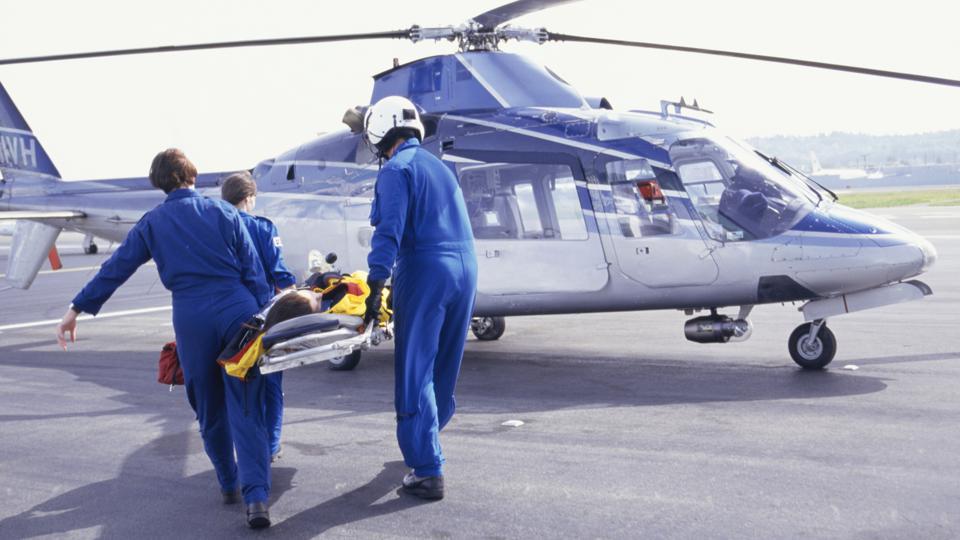So, picture this: you’re on vacation, enjoying some much-needed R&R in a beautiful tropical destination. But suddenly, disaster strikes. You find yourself in a medical emergency, and the local hospitals simply aren’t equipped to handle your condition. Cue the entrance of the heroic air ambulance, swooping in to whisk you away to a state-of-the-art medical facility. Sounds like something out of a movie, right? Well, believe it or not, air ambulance services are real, and they can be a lifesaver in critical situations. But here’s the million-dollar question: should you invest in an air ambulance insurance rider? Today, we’re going to dive deep into this topic and explore whether these insurance riders are truly worth it.

What are Air Ambulance Insurance Riders?
Air ambulance insurance riders, also known as air ambulance add-ons or air ambulance coverage, are extra provisions that can be added to an existing health insurance plan. These riders provide coverage for air ambulance services in case of a medical emergency. They are specifically designed to cover the high costs associated with air medical transportation.
Definition of Air Ambulance Insurance Riders
Air ambulance insurance riders are additional benefits that can be added to a standard health insurance policy to cover the expenses of air ambulance services. These riders typically cover the cost of transportation by helicopter, fixed-wing aircraft, or private jet to a medical facility, often in remote or specialized locations.
How Air Ambulance Insurance Riders Work
When you add an air ambulance insurance rider to your health insurance plan, you are essentially extending your coverage to include the expenses related to air medical transportation. In the event of a medical emergency that requires air transportation, the insurance rider will cover the cost of the flight, allowing you to focus on receiving the necessary medical care without worrying about the financial burden.
Types of Air Ambulance Insurance Riders
There are different types of air ambulance insurance riders available, depending on the insurance provider and policy. Some riders may only cover domestic air ambulance services within your home country, while others may offer international coverage. It is important to carefully review the terms and conditions of each rider to understand what is covered and any limitations that may exist.

Pros of Air Ambulance Insurance Riders
Financial Protection in Emergency Situations
One of the major benefits of having an air ambulance insurance rider is the financial protection it provides during emergency situations. Air ambulance services can be extremely expensive, with costs ranging from several thousand dollars to tens of thousands of dollars per flight. Having coverage for these expenses ensures that you won’t face exorbitant bills that could lead to financial hardship.
Access to High-Quality Healthcare Facilities
Air ambulance services are often used in cases where immediate medical attention is needed and the closest appropriate healthcare facility is located far away. By having an air ambulance insurance rider, you gain access to these high-quality healthcare facilities, even if they are located in remote or specialized areas. This can be particularly beneficial for individuals who live in rural or underserved areas.
Peace of Mind for Travelers
If you frequently travel for business or leisure, having an air ambulance insurance rider can provide peace of mind knowing that you are covered in case of a medical emergency. Whether you are traveling domestically or internationally, having access to air ambulance services can be crucial in ensuring that you receive timely and appropriate medical care, regardless of your location.
Coverage for Non-Medical Emergency Transportation
In addition to covering medical emergencies, some air ambulance insurance riders also provide coverage for non-medical emergency transportation. This could include situations such as being stranded in a remote location due to a natural disaster or political unrest. Having coverage for these types of emergencies can help ensure your safe and timely evacuation.
Cons of Air Ambulance Insurance Riders
Additional Cost on Top of Regular Health Insurance
One of the downsides of air ambulance insurance riders is that they come with an additional cost on top of your regular health insurance premiums. These riders are often priced separately and can significantly increase your overall insurance expenses. It is important to consider whether the added cost is worth the potential benefits, particularly if you have a limited budget.
Exclusions and Limitations
Like any insurance policy, air ambulance insurance riders may have exclusions and limitations that could impact your coverage. These could include restrictions on pre-existing conditions, limitations on the geographical areas covered, or restrictions on the types of aircraft used for transportation. It is important to carefully review the policy terms and conditions to understand any potential limitations that may apply.
Potential Coverage Gaps
While air ambulance insurance riders provide coverage for air medical transportation, it is important to note that there may still be potential coverage gaps. For example, certain conditions or treatments may not be covered, or there may be restrictions on the number of flights covered in a given time period. It is crucial to fully understand the extent of coverage provided by the rider to avoid any unexpected gaps in coverage.
Factors to Consider Before Choosing an Air Ambulance Insurance Rider
Before selecting an air ambulance insurance rider, there are several factors that you should consider to ensure that you choose the right coverage for your needs.
Geographical Coverage
Different insurance riders may have different geographical coverage limits. Some may only cover air ambulance services within your home country, while others may offer international coverage. If you frequently travel abroad, it is important to choose a rider that provides coverage in the countries you visit or may potentially require emergency medical transportation from.
Network of Approved Providers
It is essential to consider the network of approved air ambulance providers associated with the insurance rider. Check if they have a wide network that includes reputable and highly-qualified air ambulance companies. Having access to a reliable network of providers ensures that you will receive prompt and high-quality care in the event of an emergency.
Policy Limits and Maximum Benefit Amounts
Carefully review the policy limits and maximum benefit amounts associated with the air ambulance insurance rider. These limits dictate the maximum amount that will be covered by the insurance provider for air medical transportation. Consider your specific needs and what costs might be associated with an air ambulance service in order to choose a rider with sufficient coverage.
Waiting Periods
Some air ambulance insurance riders may have waiting periods before coverage becomes effective. This means that you may not be eligible for coverage immediately after purchasing the rider. Waiting periods can vary depending on the insurance provider and policy. If you anticipate needing immediate coverage, be sure to choose a rider with a minimal or no waiting period.
Pre-Existing Conditions
Pre-existing conditions may have limitations or exclusions when it comes to air ambulance insurance riders. Some riders may not cover any costs related to a pre-existing condition, while others may have waiting periods before coverage is available. Be sure to disclose any pre-existing conditions and carefully review the policy terms and conditions to understand how they may impact your coverage.
Renewability and Portability
Consider the renewability and portability of the air ambulance insurance rider. Can the rider be renewed indefinitely, or does it have an expiration date? Additionally, if you change or switch health insurance plans, will the rider be portable and transferable to the new policy? These factors are important to ensure that you maintain continuous coverage for air ambulance services.
Alternatives to Air Ambulance Insurance Riders
While air ambulance insurance riders can provide valuable coverage, they are not the only options available. Here are some alternatives to consider:
Travel Insurance
Travel insurance policies often include coverage for emergency medical evacuation, which can encompass air ambulance services. If you primarily travel for leisure or have short-term travel needs, purchasing a comprehensive travel insurance policy may be a more cost-effective option compared to adding an air ambulance rider to your health insurance plan.
Global Medical Assistance Memberships
Global medical assistance memberships, such as those offered by companies specializing in medical transportation, may provide comprehensive coverage for air ambulance services. These memberships typically offer worldwide coverage and can be an alternative to traditional health insurance riders. However, it is important to carefully review the terms and coverage options to ensure that they meet your specific needs.
Emergency Medical Evacuation Coverage
Some insurance providers offer standalone emergency medical evacuation coverage. This type of coverage is specifically designed to cover the costs associated with air ambulance services in emergency situations. If you are primarily concerned with having coverage for air medical transportation, without the need for comprehensive health insurance, this may be a suitable alternative.
Government or Employer-Based Emergency Assistance Programs
Depending on your country of residence or employment, there may be government or employer-based emergency assistance programs that offer coverage for air ambulance services. These programs are often designed to provide emergency assistance to individuals who are not covered by traditional health insurance plans. Check with your local government or employer to see if such programs are available.
Case Studies: Real-Life Scenarios
To give you a better understanding of how air ambulance insurance riders can be beneficial, here are a few real-life case studies:
Case Study #1: Traveler Injured in a Remote Location
Imagine you are traveling to a remote mountainous area for a hiking expedition and you suffer a severe injury. Without access to an air ambulance service, it may take hours or even days to reach the nearest appropriate medical facility. By having an air ambulance insurance rider, you can quickly be transported to a hospital capable of providing the necessary care, potentially saving your life and minimizing the risk of further complications.
Case Study #2: Pregnant Woman Requiring Emergency Medical Evacuation
A pregnant woman is traveling internationally and experiences a serious complication that requires emergency medical attention. The local healthcare facility may not have the specialized equipment or expertise to handle the situation. With an air ambulance insurance rider, she can be safely transported to a hospital with the necessary resources to ensure both her and her baby’s well-being.
Case Study #3: Patient Needing Specialized Hospital Care Far from Home
Suppose an individual who resides in a remote area is diagnosed with a rare medical condition that requires treatment at a specialized hospital located hundreds of miles away. Without an air ambulance insurance rider, the cost of repeated air medical transportation could be financially overwhelming. However, with the rider in place, they can receive the required treatment at the specialized facility without having to worry about the financial burden.
Tips for Evaluating Air Ambulance Insurance Riders
When considering an air ambulance insurance rider, here are some important tips to keep in mind:
Carefully Review Policy Terms and Conditions
Take the time to carefully review the policy terms and conditions associated with the air ambulance insurance rider. Pay attention to coverage limits, exclusions, and any waiting periods that may apply. Understanding the specifics of the policy will help you make an informed decision and ensure that the rider meets your specific needs.
Compare Quotes and Coverage Options
Compare quotes and coverage options from different insurance providers before making a decision. Look for riders that offer comprehensive coverage at a reasonable cost. Don’t be afraid to ask questions and seek clarification on any areas that are unclear. Comparing multiple options will help you find the best coverage for your budget and needs.
Consider Personal Health and Travel History
Consider your personal health and travel history when evaluating air ambulance insurance riders. If you have pre-existing medical conditions or frequently travel to remote or underserved areas, having coverage for air medical transportation becomes even more crucial. Assess your specific needs and choose a rider that aligns with your unique circumstances.
Consult with an Insurance Expert
If you are unsure about the complexities of air ambulance insurance riders or need assistance in evaluating your options, consider consulting with an insurance expert. Insurance professionals can provide guidance tailored to your specific situation, ensuring that you make an informed decision and choose the best coverage for your needs.
Conclusion
Air ambulance insurance riders can provide valuable coverage for air medical transportation in case of a medical emergency. They offer financial protection, access to high-quality healthcare facilities, and peace of mind for travelers. However, there are also limitations and potential coverage gaps to consider. Remember to carefully review policy terms and conditions, compare coverage options, and evaluate your personal health and travel history before choosing an air ambulance insurance rider. Additionally, consider alternative options such as travel insurance or global medical assistance memberships. By taking these factors into account and making an informed decision, you can ensure that you have the necessary coverage in case of an emergency requiring air medical transportation.



